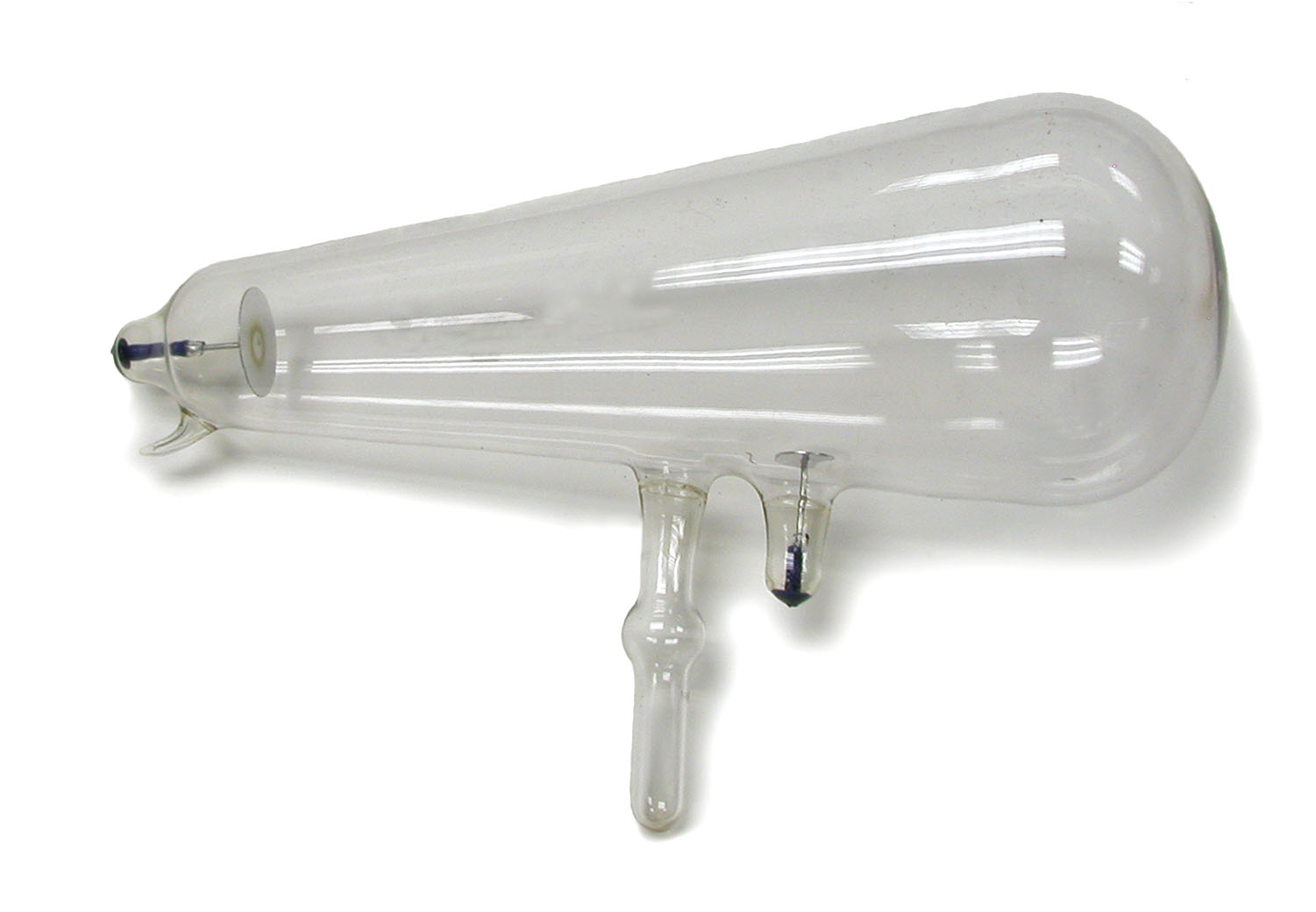Crookes Tube (ca. late 1800s)

This is the classic version of what is often known as a Crookes tube. Developed by William Crookes to investigate electrical discharges in gas. Although it is not certain what type of tube Rontgen was using when he discovered X-rays, this is the type of tube most commonly assumed to be involved.
The flat disk at the left end is the cathode while the electrode in the short side arm at the bottom is the anode. The longer glass extension pointing downwards is simply a support arm. The cathode rays (electrons) strike the large flat end of the tube which becomes the source of the X-rays. Since the bombardment of the glass also produces a fluorescence, it was postulated that there was a connection between fluorescence and the emission of X-rays.
These tubes had two major shortcomings in terms of their ability to produce X-rays. First, because the X-rays originated over a rather large area, the resulting X-ray images lacked sharpness. Second, the low intensity X-ray output required long exposures and these tubes could not hold up to the workload.
Perhaps the first major advance in X-ray tube design was the incorporation of a metal target, something that resulted in greater X-ray intensities than possible with a glass target. Nevertheless, the use of glass as a target had some advantages and the method was not completely abandoned. For example, see the collection's cold cathode therapy tube.
Size: 11" long, 4" maximum bulb diameter
Kindly donated by Ron Kathren.
